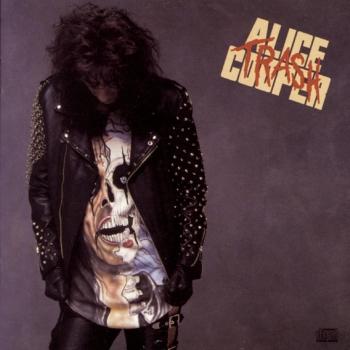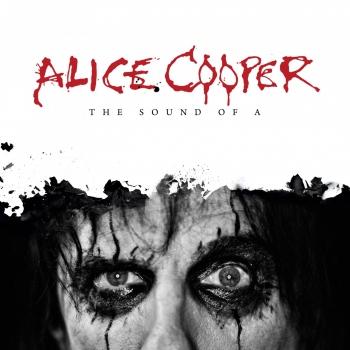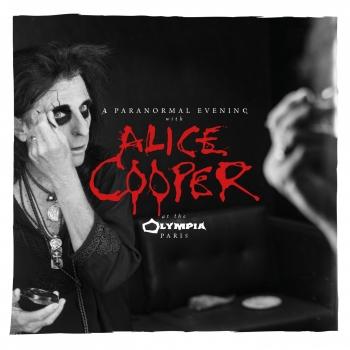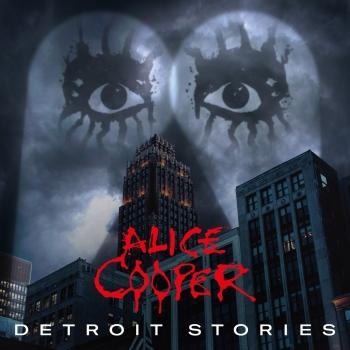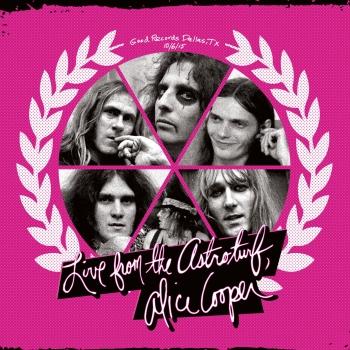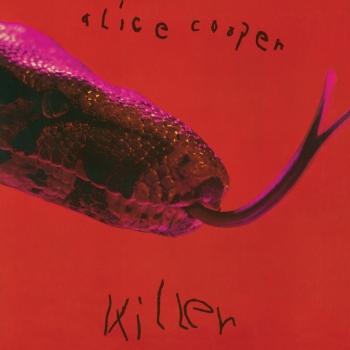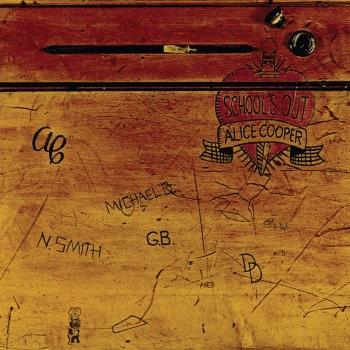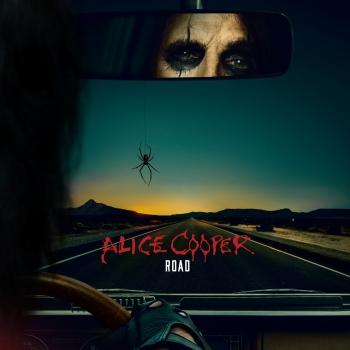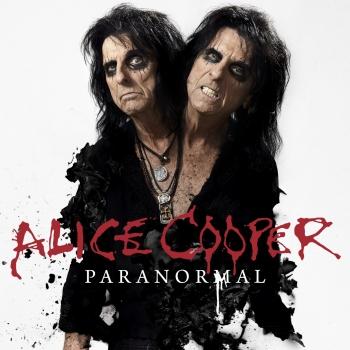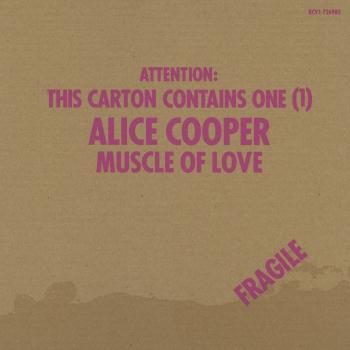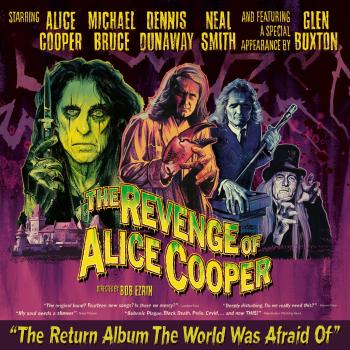
Trash (Remastered) Alice Cooper
Album Info
Album Veröffentlichung:
1989
HRA-Veröffentlichung:
12.04.2017
Das Album enthält Albumcover
Entschuldigen Sie bitte!
Sehr geehrter HIGHRESAUDIO Besucher,
leider kann das Album zurzeit aufgrund von Länder- und Lizenzbeschränkungen nicht gekauft werden oder uns liegt der offizielle Veröffentlichungstermin für Ihr Land noch nicht vor. Wir aktualisieren unsere Veröffentlichungstermine ein- bis zweimal die Woche. Bitte schauen Sie ab und zu mal wieder rein.
Wir empfehlen Ihnen das Album auf Ihre Merkliste zu setzen.
Wir bedanken uns für Ihr Verständnis und Ihre Geduld.
Ihr, HIGHRESAUDIO
- 1 Poison 04:27
- 2 Spark in the Dark 03:51
- 3 House of Fire 03:46
- 4 Why Trust You 03:12
- 5 Only My Heart Talkin' 04:46
- 6 Bed of Nails 04:19
- 7 This Maniac's in Love with You 03:47
- 8 Trash 04:03
- 9 Hell Is Living Without You 04:11
- 10 I'm Your Gun 03:47
Info zu Trash (Remastered)
While Alice Cooper's late-'80s comeback was a success largely on the strength of his ever-popular stage show, his albums of the era, 1986's „Constrictor“ and 1987's „Raise Your Fist and Yell“, failed to reap mass commercial success. All of this changed with 1989's „Trash“, his first platinum-certified album in nearly 15 years. The album's top-10 single "Poison" made fans of '80s glam-metal fully embrace Cooper, a man who had almost single-handedly created the genre.
As he did on his past couple of releases, Alice worked with one of the day's top producers, Desmond Child, who was known primarily for his songwriting talents (including hits for Aerosmith, Kiss, Cher, and others). Also, „Trash“ included several guest appearances from some of rock's top names--Jon Bon Jovi and Richie Sambora of Bon Jovi play on "Hell Is Living Without You," while four of Aerosmith's five members appear at various points throughout. Other album highlights include "Bed of Nails," "House on Fire," and the title track.
„Alice Cooper hadn't had a hugely successful album in over a decade when, in 1989, he teamed up with Bon Jovi producer Desmond Child for Trash -- a highly slick and commercial yet edgy pop-metal effort that temporarily restored him to the charts in a big way. Fueled by the irresistible hit single "Poison," the album temporarily gave back to Cooper the type of visibility he deserved. There's nothing shocking here, and Cooper's ability to generate controversy had long since faded. But while the escapist Trash -- which was clearly aimed at the Mötley Crüe/Guns N' Roses crowd -- may not be the most challenging album of Cooper's career, and isn't in a class with School's Out or Billion Dollar Babies, it's fun and quite enjoyable. And it was great to see the long-neglected Cooper on MTV next to so many of the '80s rockers he had influenced.“ (Alex Henderson, AMG)
Alice Cooper, vocals
John McCurry, guitar
Hugh McDonald, bass
Bobby Chouinard, drums
Alan St. John, keyboards
Additional musicians:
Steven Tyler, vocals (track 5)
Jon Bon Jovi, vocals (track 8)
Kip Winger, vocals (track 10)
Joe Perry, guitar (track 3)
Richie Sambora, guitar (track 9)
Steve Lukather, guitar (track 9)
Kane Roberts, guitar (track 6)
Mark Frazier, guitar (track 8)
Jack Johnson, guitar (track 8)
Guy Mann-Dude, guitar (tracks 2, 4, 7)
Tom Hamilton, bass (track 8)
Joey Kramer, drums (track 8)
Paul Chiten, keyboards
Steve Deutsch, synth programming
Gregg Mangiafico, keyboards & special effects
Recorded at Bearsville Studios, Woodstock, New York; The Power Station, Right Track Recording, Sigma Sound Studios and Mediasound, New York, New York
Engineered by Sir Arthur Payson
Produced by Desmond Child
Digitally remastered
Please Note: we do not offer the 192 kHz version of this album, because there is no audible difference to the 96 kHz version!
Alice Cooper (vocals; born February 4, 1948), Glen Buxton (guitar; born November 10, 1947, died October 18, 1997), Michael Bruce (guitar, keyboards; born March 16, 1948), Dennis Dunaway (bass; born December 9, 1948), Neal Smith (drums; born September 23, 1947).
Before the world heard of KISS, the New York Dolls, Marilyn Manson or Ozzy Osbourne, there was Alice Cooper, the original shock-rock band. With their penchant for ghoulish stage shows and a gender-bending wardrobe, this five-man group brought the element of theater to the world of rock. That alone would securely cement their stature as innovators. Yet they backed up their penchant for outrage with rock-solid music. Beyond the visuals Alice Cooper was a musical powerhouse, incorporating melodic hooks and complex progressive-rock passages into a foundation of catchy, riff-driven hard rock delivered in Cooper’s menacing, take-no-prisoners voice. Many of their songs – including “I’m Eighteen,” “Under My Wheels,” “Be My Lover” and “School’s Out” – remain anthems of the classic-rock era.
During their Seventies heyday it was impossible to be indifferent about Alice Cooper. They were one of the first acts of the modern-rock era that forced people to sit up and take notice, engendering curiosity and controversy in equal measure. The controversy began with the group’s very name. Alice Cooper was the both a band name and stage handle of its lead singer (born Vincent Furnier), suggesting a flamboyant sexual dualism that America was not yet ready to accept. Reportedly, the name surfaced during a session with the Ouija board.
Onstage, Alice Cooper brought a new level of visual theatrics to arenas with their gory array of props, which included a guillotine, electric chair, boa constrictor and fake blood. Their musical set pieces included Cooper’s beheading and electrocution. Their bleakly humorous explorations of the dark side were a far cry from the Woodstock ideals of peace and love. “We were the group that drove a stake through the heart of the love generation,” noted Cooper. The group was even deemed objectionable behind the Iron Curtain. According to Pravda, the Russian state newspaper, “Alice Cooper’s singing makes the blood run cold.”
They even jump-started the punk-rock movement that took root in Britain, inspiring the likes of Johnny Rotten (a.k.a., John Lydon). “I’ve referred to the Sex Pistols as ‘musical vaudeville’ and ‘evil burlesque,’ and for me there was definitively Alice Cooper influence there,” Lydon reflected.
Alice Cooper was banned, censured and lambasted by the establishment, all of which further fueled ticket sales to their concert spectacles. Their 1973 tour broke box-office records previously held by the Rolling Stones, and raised the bar for touring rock bands. After Alice Cooper, fans came to expect more from the concert experience. They wanted to see a show.
The roots of Alice Cooper extend back to Cortez High School in Phoenix, Arizona, where the core members came together as music aficionados with a shared yen for the macabre and surreal. They weren’t necessarily alienated misfits, as three members of the Earwigs – the first group in the Alice Cooper lineage – were high-school track stars who ranked among the fastest milers in the state. Dunaway, original drummer John Speer and Alice Cooper himself (known as Vince Furnier to his friends) could run a 4:30 mile, according to Cooper. Renaming themselves the Spiders, they scored a regional hit with “Don’t Blow Your Mind.” They changed names again to the Nazz and moved to Hollywood in 1968 with the idea of making it nationally. The final name change to Alice Cooper came when they learned there already was a Nazz – the Todd Rundgren-led group from Philadelphia – in existence.
The Alice Cooper band comprised vocalist Cooper, lead guitarist Glen Buxton, rhythm guitarist Michael Bruce, bassist Dennis Dunaway and drummer Neal Smith. Frank Zappa signed them to his Straight label. Zappa was attracted to the way the group flouted conventions, both socio-sexual and musical. Alice Cooper’s first two albums, Pretties for You (1969) and Easy Action (1970), were strange even by Sixties psychedelic standards, but hold up today as monuments to the group’s undaunted pursuit of the bizarre.
However, Alice Cooper himself regards those records more as products of the group’s Nazz era and considers Love It to Death the first real Alice Cooper album. This release marked the group’s debut on Warner Bros. and the first of four with producer Bob Ezrin. (He would also go on to produce Alice Cooper as a solo artist.) With his cinematic and colorful production style, Ezrin came to be regarded by Alice Cooper as their George Martin (the Beatles’ producer). He taught them to focus, edit and tighten their more sprawling conceptual numbers. Released in 1971, Love It to Death was a tour de force of misfit fantasies and adolescent angst whose key number, “Eighteen,” gave Alice Cooper its first hit and an indelible classic about the anxieties of late adolescence. (Source: www.rockhall.com)
Dieses Album enthält kein Booklet










